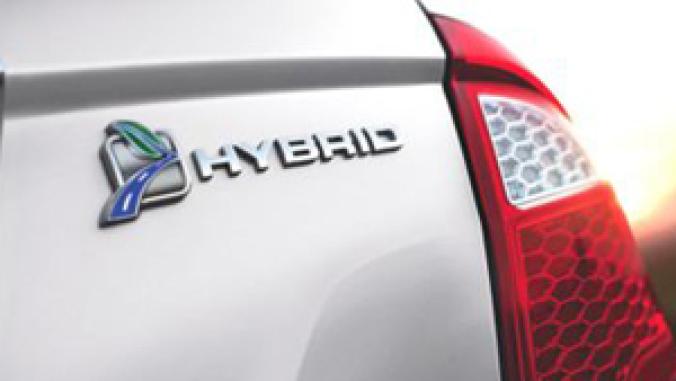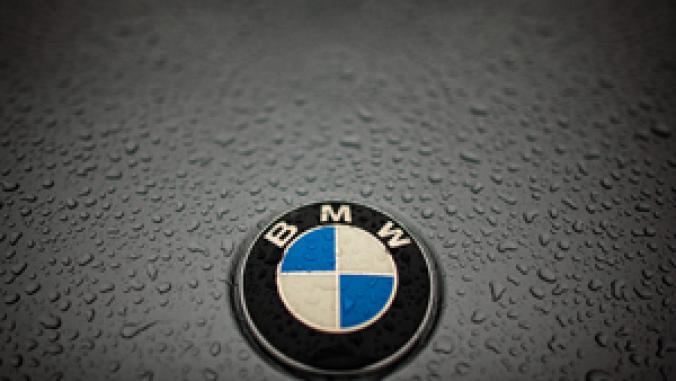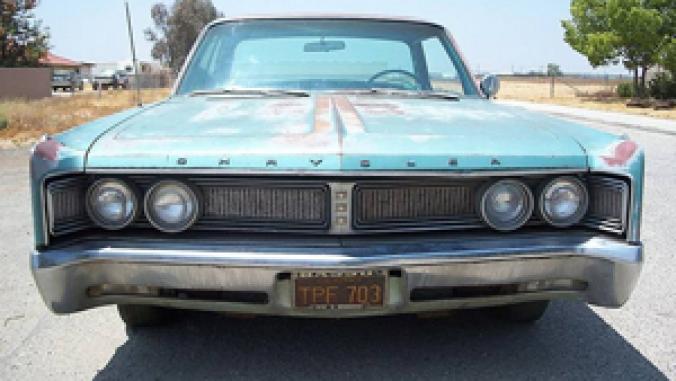Why the 54.5 MPG Rules Will Lead to a Rebirth of US Automakers
<p>This year's Detroit Auto Show is, unlike so many in recent years, full of optimism. And you can attribute that optimism in large part to the rush to embrace the technologies that deliver more fuel-efficient vehicles.</p>

Unlike the recent years, this year's Detroit Auto Show is full of optimism. As I discuss in an op-ed in Tuesday's Detroit Free Press and in my speech today in Detroit at the annual Automotive News Congress, the environmental community is committed to doing its part to keep the auto industry moving forward.
That's why we have joined forces with the 13 automakers, the UAW, consumer advocates, and others to support the Obama Administration's new proposal to strengthen standards to deliver 54.5 mpg by 2025.
The technologies used to meet the Obama administration's proposed 54.5 miles-per-gallon carbon pollution and fuel efficiency standards for cars and light trucks will generate as much as $300 billion for the U.S. auto industry, put $200 billion back into the pockets of consumers while securing a global leadership for Detroit in advanced auto innovations for the 21st century.
Unfortunately, there are still some ideologues in Washington D.C., especially in Congress, that want to return us to political gridlock on clean cars. My message today to the auto industry is simply "let's work together" to build markets for clean cars, cut our dangerous dependence on oil, and re-invest in American Manufacturing Leadership.
The full text of my remarks are below:
Statement of Roland Hwang at the Automotive News Congress
January 10, 2011
Good morning. Thank you for that kind introduction.
I am pleased to be here today on behalf of the natural resources defense council.
A few years ago, I felt something like daniel in the lion's den addressing this audience. But the truth is there has been amazing progress in the last few years ... a real coming together of the minds. No longer is there a huge gulf everywhere between environmentalists and the auto industry.
While it is true that some elements of the industry have been slow to warm up to outside perspectives ... others have been very receptive. For my part, I have tried to be a better listener and to find common ground where possible. It seems to me there is just too much at stake here for everyone involved ... the auto industry ... car consumers ... and, in fact, americans in general. We have to continue to find ways to work together ... and I am committed to doing so.
Today ... I am going to address one of those topics where more and more people are finding a way to agree – and not just reflexively oppose everything the other side has to say.
Imagine if our nation was offered a choice of how to spend half a trillion dollars of our wealth over the next two decades.
One option would be to send $350 billion overseas to the middle east and other oil exporting countries, and the remainder on increasing oil industry revenues.
An alternative option would be to take that half a trillion dollars and invest $300 billion directly into the U.S. Auto industry, put $200 billion back into consumers' pockets, and create half a million new jobs while cutting emissions of dangerous carbon pollution.
Is this choice just a pipe dream? Is it too simplistic a way to look at things?
Hardly.
In fact, what I just outlined is the promise, broadly speaking, of the historic new clean car agreement between the obama administration, california and major carmakers. They joined together last summer in a grand bargain to deliver cars that get, on average, the equivalent of 54.5 miles per gallon by the model year 2025, roughly double the average for cars on the road today.
The additional technology to meet this target will result in $300 billion in greater revenues for the U.S. Auto industry and ensure it will be a global leader in advanced vehicle innovation.
Stopping $350 billion from being sent overseas will strengthen our economy, make us less vulnerable to oil price shocks, and create hundreds of thousands of U.S. Jobs.
And curbing emissions of carbon pollution will help protect our economy against the costly impacts of global climate change, such as extreme weather events, like hurricanes, heat waves, and flooding.
Fortunately for the auto industry, it doesn't have to wait til 2025 to see the benefits of stronger standards.
In a world of unpredictable fuel prices, it is the predictability of stronger fuel-efficiency standards that has allowed the auto industry to assert control over its own destiny.
Thanks to the 2009 agreement to raise standards to 35.5 mpg by 2016, the industry is much better prepared, more resilient and -- indeed -- thriving in the face of this past year's record high gasoline expenditures. Sales, profits and fuel efficiency are all on the rise. And unlike with every past oil shocks, gm and ford actually have gained market share this time around.
54.5 mpg will spark even greater spark innovation that will ensure the rebirth of the U.S. Auto industry.
But I want to be clear that ... as you know ... these innovations are not going to rely on some imaginary "black box" technology ... this is very much existing know-how ... the science of what already exists ... as opposed to "science fiction.
Now ... I know it's unrealistic to assume that overnight every american is going to be driving home from work and plugging in their car to charge up ... just like they do their cell phones.
Electric drivetrains are certainly the future of the car. But to meet 54.5 mpg, over 80 percent of the vehicles will be still powered by conventional--albeit highly sophisticated--gasoline engines.
The good news is that's where there is tremendous opportunity for some of the most consequential technology to come into play.
Adding a simple turbocharger, direct injection to engines and cutting cylinders can deliver the same power and dependable performance while burning less gas. Automatic and dual clutch, automated 8-speed transmissions shift faster and allow the engine to run at its sweet spot longer. High strength, advanced materials ensure cars will be safe and efficient.
These innovations are already moving from limited applications in a handful of models ... to widespread use on assembly lines in every auto factory.
Ford's version of the downsized gasoline direct injection turbocharged engine, called the ecoboost, now accounts for 4 of every 10 f-150s. After just being introduced last february, it recently passed the 100,000 sales mark.
So, what's the catch?
Well, as usual, ideologues in the media and in washington d.C. Who are more interested in thwarting anything that even remotely seems "green" than doing what is best for our nation, have joined forces with auto dealers to try to preserve the status quo. Through costly investigations and wasteful legislation aimed at blocking the new standards from being implemented, they're doing all they can to scuttle this historic accord , bury the benefits it would provide, and return us to political gridlock on clean cars.
As they have in years past, those who oppose needed progress have dusted off tired arguments aimed at convincing us all that somehow americans don't like the idea of saving money and driving better cars.
Fortunately, consumers are way ahead of the game.
They're voting with their wallets and marching in droves to snap up a new generation of fuel-efficient cars as fast as detroit and other automakers can make them.
Where once suvs and v-8s ruled the road, now one out of every two vehicles sold is a small car, small crossover, or mid-size car. Thrifty 4-cylinders are now america's most popular engine choice.
According to TrueCar.com, when compared to the same month the previous year, average fuel efficiency of new vehicles has increased for the last 15 straight months.
New vehicle fuel efficiency is -- by far -- the single most important consideration to americans buying a new car, with 45 percent of consumers calling it the number-one factor in their decision, according to a national survey ford motor co. Commissioned last fall.
54.5 mpg will be a boon for consumers by expanding the number of fuel efficienct offerings. Already, thanks to the 2009 clean car agreement, nearly 4o models offered for sale today can essentially meet the proposed 2017 fleet average standard of 36.6 mpg. These models range from compact cars to pickup trucks, including the buick lacrosse, ford focus and honda odyssey.
Consumers expecting to pay more for a car that meets 54.5 mpg may be surprised. Over the life of the vehicle, they will save thousands of dollars. But perhaps more importantly, households balancing monthly bills will see immediate savings since their monthly fuel savings willoutweigh their increased monthly auto payments.
So my message today is simple: let's work together.
The latest clean car agreement offers our country another choice ... a choice between gridlock and progress. Imagine a time when automakers, regulators and environmentalist are all working together, in partnership, to build markets for clean cars, cut our dangerous dependence on oil, and re-invest in american manufacturing leadership.
The latest clean car agreement brought together unusual bedfellows in an unprecedented and diverse array of support... from automakers to environmentalists, republicans to democrats, consumer advocates to energy security advocates, business leaders to labor unions.
Let's hope those that want to disrupt this program and return us to the dark days of political gridlock don't succeed... The choice is ours.... And the stakes are very high for the U.S. Auto industry ... American jobs ...and our nation's future.
I look forward to working with you to keep things moving ahead in the right direction. Thank you!
![]() This article originally appeared on the NRDC's Switchboard blog, and is reprinted with permission.
This article originally appeared on the NRDC's Switchboard blog, and is reprinted with permission.
Ford Fusion hybrid photos courtesy of the Detroit Auto Show.





